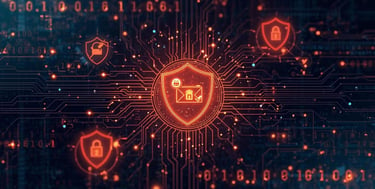
Stay Ahead of the Curve in Post-Quantum Security
Quantum computing is no longer science fiction — and organisations that handle sensitive data must prepare now. At Q-Safe, we don’t just build security tools — we share our expertise to help others make informed, forward-thinking decisions. Explore our latest research, thought leadership, and practical guides on post-quantum encryption, compliance, and secure enterprise communication
Preparing for the Quantum Threat: A Guide for CISOs


“Preparing for the Quantum Threat: A Guide for CISOs” empowers security leaders to understand quantum risks, assess vulnerabilities, and plan migration to post-quantum cryptography.
A strategic roadmap to safeguard organizational resilience in the quantum era.


Beyond AES: Understanding NIST-Approved PQC Standards
Beyond AES: Understanding NIST-Approved PQC Standards explores the next generation of encryption — Kyber, Dilithium, and Falcon — built to resist quantum attacks.
Gain insights into implementation strategies and how these standards future-proof your security infrastructure.


Zero-Trust and PQC: How They Intersect
Zero-Trust and PQC: How They Intersect highlights how post-quantum cryptography strengthens Zero-Trust frameworks.
Together, they eliminate implicit trust, ensuring every identity and transaction remains secure — even in a quantum-enabled world.
In-depth technical and strategic publications for enterprise teams
Whitepapers
Blog Articles
Regular insights from the Q-Safe team
What is Kyber and Why Does It Matter?
What is Kyber and Why Does It Matter?
Kyber is a NIST-approved post-quantum key encapsulation mechanism designed to protect encryption keys from quantum attacks.
It matters because it enables organizations to build quantum-resistant communication systems today — securing data for the future.




Quantum Security Roadmaps: Lessons from Government Adoption
Quantum Security Roadmaps: Lessons from Government Adoption
Governments are leading the way in preparing for quantum threats through structured roadmaps and phased implementation of PQC standards. Organizations can learn from these strategies to prioritize risk assessment, technology upgrades, and compliance in their own quantum security journey.


How to Protect Your Org From ‘Harvest Now, Decrypt Later Attacks
How to Protect Your Org From ‘Harvest Now, Decrypt Later’ Attacks
Adversaries may store encrypted data today to decrypt it once quantum computers mature.
Implement post-quantum cryptography, enforce strong key management, and migrate to hybrid encryption now to safeguard long-term confidentiality.
Educational Guides
Practical, jargon-free content for decision-makers and tech leaders
5 Steps to Begin Your Post-Quantum Transition
Assess Quantum Risk – Identify data and systems vulnerable to future quantum attacks.
Educate Stakeholders – Build awareness among executives, IT, and security teams.
Adopt Hybrid Cryptography – Implement PQC alongside existing encryption for gradual transition.
Update Policies & Compliance – Align governance with emerging quantum standards.
Monitor & Iterate – Continuously evaluate readiness and update strategies as quantum technologies evolve.




Decoding PQC for Non-Cryptographers
Decoding PQC for Non-Cryptographers
Post-Quantum Cryptography (PQC) protects data against future quantum attacks using advanced, quantum-resistant algorithms.
This guide simplifies concepts, helping non-experts understand implementation, benefits, and real-world impact without complex math.


Choosing the Right Secure Messaging Platform for Regulated Workflows
Choosing the Right Secure Messaging Platform for Regulated Workflows
Select a platform that ensures end-to-end encryption, compliance with industry regulations, and audit-ready communication.
Focus on scalability, access controls, and post-quantum readiness to protect sensitive data across your organization.

Newsletter Signup
Subscribe for insights on post-quantum security, compliance updates, and product news.
© 2025. All rights reserved.


